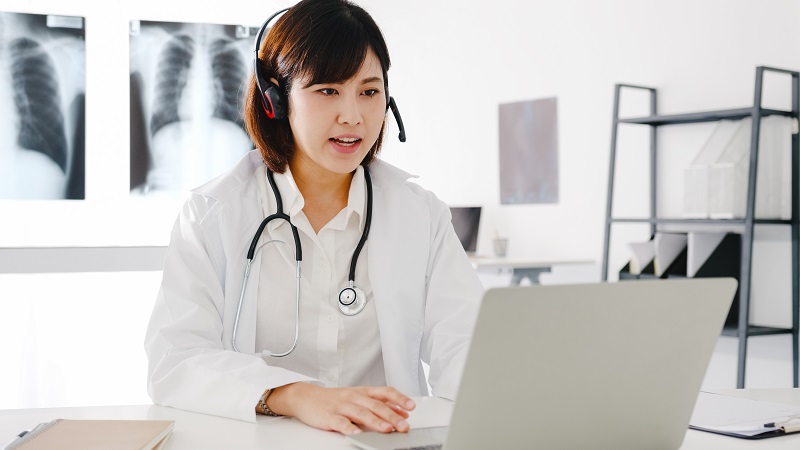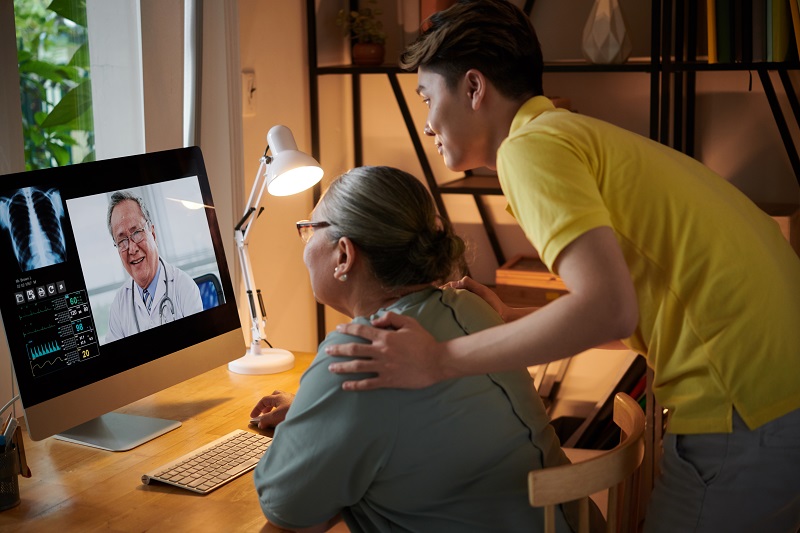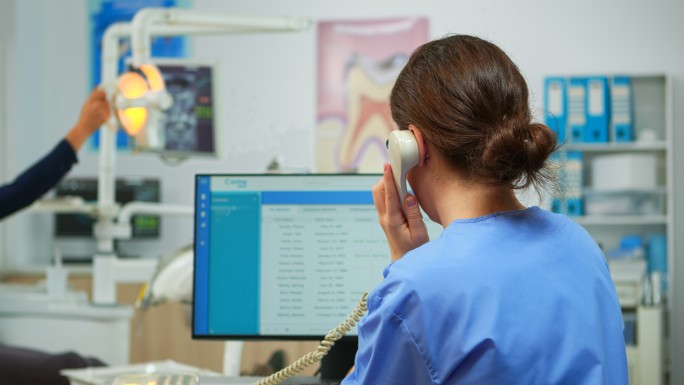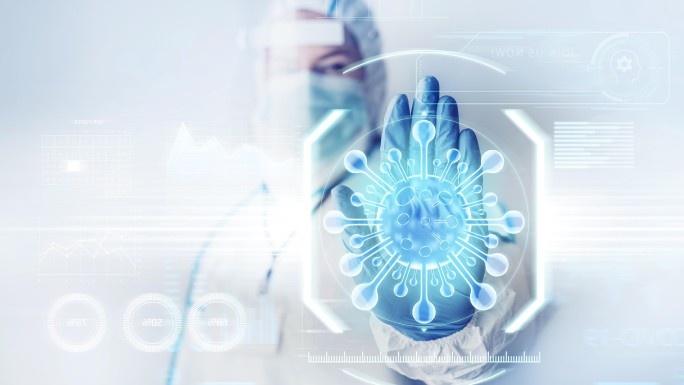Overview about Remote patient monitoring and Telehealth
As the pandemic broke out, people focused more on how to keep life going on remotely. Healthcare was not outside that path. All kinds of remote healthcare was developed, such as telehealth and remote patient monitoring, to ensure the continuous care of patients. Those terms have brought a new approach to healthcare services, showing the potential of technology in health settings.
In this article, we’re going to find out about remote patient monitoring (RPM) and telehealth, how to distinguish them and what combined power they hold to enhance the quality of care.

Definition and role of remote patient monitoring (RPM)
Remote patient monitoring (RPM) refers to monitoring patients outside of traditional healthcare settings, patients can be at home, or some remote place and be monitored through digital medical devices. Healthcare providers will receive data such as weight scales, blood pressure, or blood glucose to diagnosis. All these information will allow healthcare staff to deliver the proper treatment for remote patients.
The primary purpose of RPM is to monitor and track specific health metrics continuously. It is often used for managing chronic conditions, post-operative care, and situations where ongoing monitoring is crucial for early detection of changes in health status.
Read more: Complete guide to remote patient monitoring system (RPMS)
Definition and role of telehealth
Telehealth is a broader term than remote patient monitoring, referring to giving healthcare services through digital technology. Telehealth encompasses various healthcare services delivered remotely, including virtual consultations, video visits, and other forms of telecommunication. It involves the provision of healthcare services and consultations from a distance.
Telehealth aims to provide a range of healthcare services remotely, including consultations, diagnosis, treatment, and education. It is a more comprehensive approach that goes beyond continuous monitoring and can involve real-time interactions between patients and healthcare providers.
The differences between remote patient monitoring and telehealth
Remote patient monitoring (RPM) and telehealth are related concepts in healthcare technology, still, they serve different purposes and involve distinct approaches.
| Differences | Remote Patient Monitoring (RPM) | Telehealth |
| Data Collection | Focusing on passive data collection through devices such as wearable sensors, smart devices, or connected medical equipment. The emphasis is on continuous, real-time monitoring of health parameters. | Involving some data collection (e.g., patient history), its primary focus is on facilitating communication and interaction between patients and healthcare providers. It often relies on real-time video conferencing or secure messaging. |
| Interaction and Engagement | Limited direct interaction between patients and healthcare providers unless specific thresholds or alerts are triggered. The emphasis is on continuous monitoring rather than real-time communication. | Emphasizing direct interaction and engagement between patients and healthcare providers. It facilitates virtual appointments, consultations, and discussions in real time, providing a more interactive healthcare experience. |
| Use Cases | The management of chronic conditions (e.g., diabetes, hypertension) or post-surgical care. Some other cases are monitoring of patients with specific health concerns that require continuous attention. | Applied to a wide range of healthcare services, including primary care consultations, specialty consultations, mental health services, follow-up appointments, and preventive care. |
| Technology and Devices | Relying on wearable devices, sensors, and connected medical equipment for continuous data collection. The emphasis is on devices that passively collect health information. | Using various technologies, including video conferencing platforms, secure messaging systems, and other communication tools that enable real-time interaction between patients and healthcare providers. |
How remote patient monitoring and telehealth work together for better healthcare settings
Remote patient monitoring (RPM) and telehealth can work synergistically to create a comprehensive and effective healthcare environment, offering numerous benefits for both patients and healthcare providers. Here's how they can complement each other for better healthcare settings:
Holistic patient care
RPM continuously collects patient health data, providing a complete view of the patient's health. Telehealth then enables real-time communication, allowing healthcare providers to discuss those collected data with patients, answer questions, and make informed decisions collaboratively.
Chronic disease management
Patients with chronic conditions can benefit from RPM for continuous monitoring of vital signs and key health metrics. This passive data collection allows for early detection of changes in health status.
Telehealth complements RPM by facilitating virtual consultations where healthcare providers can discuss treatment plans, review RPM data, and make adjustments to the care plan based on the patient's current health status.
Post-operative care
RPM is valuable for post-operative care, enabling healthcare providers to remotely monitor patients' recovery. This includes tracking vital signs, pain levels, and any signs of complications. Telehealth can be utilized for post-operative follow-up appointments, allowing healthcare providers to visually assess the patient's recovery, address concerns, and provide necessary guidance without requiring an in-person visit.
Medication management
RPM can be configured to monitor medication adherence through connected devices. Alerts can be generated if patients miss doses or exhibit patterns of non-compliance. Telehealth appointments provide an opportunity for healthcare providers to discuss medication adherence, address side effects, and make adjustments to the medication regimen based on the patient's response.

Remote consultations for urgent matters
In situations where immediate interaction is necessary, telehealth can facilitate virtual consultations for urgent matters. Patients can connect with healthcare providers quickly to address concerns without waiting for scheduled RPM data reviews.
Enhanced patient engagement
Telehealth platforms can be used to educate patients about their health conditions, treatment plans, and the importance of continuous monitoring using RPM devices.
The combination of RPM and telehealth encourages patients to actively participate in their care. They can learn to interpret RPM data, engage in telehealth consultations, and make lifestyle adjustments based on the guidance of healthcare providers.
Efficient use of healthcare resources
RPM helps healthcare providers identify patients who need immediate attention or intervention, optimizing the use of healthcare resources. Telehealth then can reduce the need for unnecessary in-person visits. Routine follow-ups and consultations can be conducted virtually, which help save time and resources.
Conclusion
In conclusion, the combined impact of remote patient monitoring (RPM) and telehealth has bridged the geographical gaps in access to care. RPM's continuous monitoring capabilities provide a real-time window into patients' health, allowing for early intervention and personalized treatment plans. Telehealth, on the other hand, extends the reach of healthcare beyond the confines of traditional clinics.
Together, they can create a comprehensive approach to patient care, promoting proactive health management. From that, both healthcare providers and patients can reduce the burden of in-person visits, particularly chronic diseases. As technology continues to advance, the future holds the promise of even greater connectivity, accessibility, and effectiveness in delivering healthcare services.









